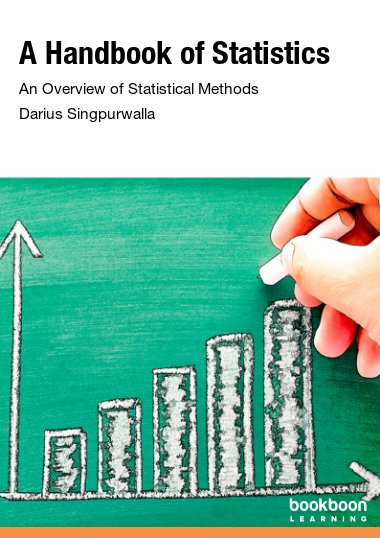A Handbook for Statistics provides readers with an overview of common statistical methods used in a wide variety of disciplines. The book focuses on giving the intuition behind the methods as well as how to execute methods using Microsoft Excel. Handbook for Statistics is divided into five main sections. The first section discusses why we study statistics and how we apply statistics to solve problems. The second section covers descriptive statistics which covers different ways to describe large data sets. Section three covers probability and probability distributions. Section four gives an overview of inference. Finally section five covers correlation and simple linear regression.

